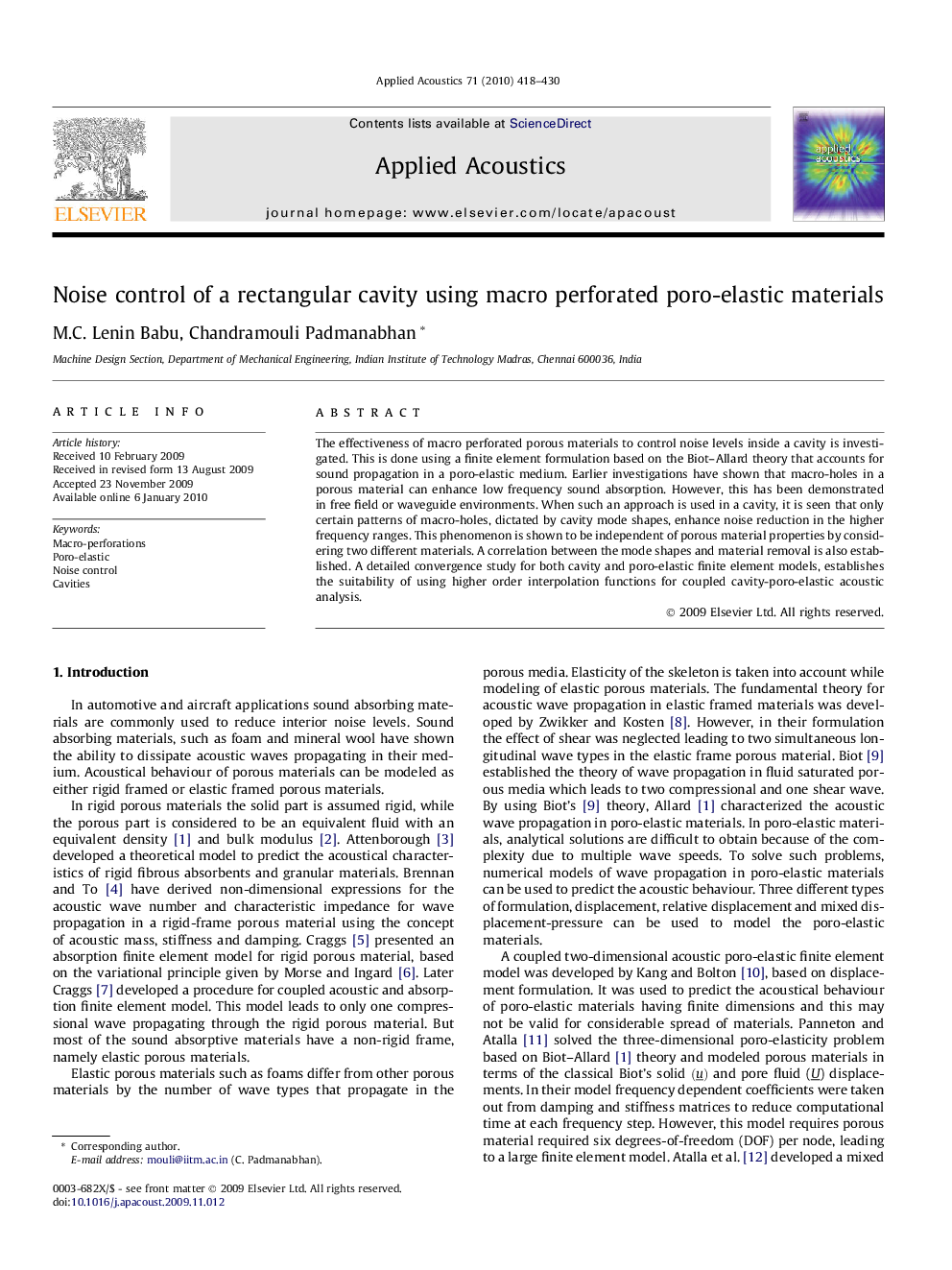| Article ID | Journal | Published Year | Pages | File Type |
|---|---|---|---|---|
| 755015 | Applied Acoustics | 2010 | 13 Pages |
The effectiveness of macro perforated porous materials to control noise levels inside a cavity is investigated. This is done using a finite element formulation based on the Biot–Allard theory that accounts for sound propagation in a poro-elastic medium. Earlier investigations have shown that macro-holes in a porous material can enhance low frequency sound absorption. However, this has been demonstrated in free field or waveguide environments. When such an approach is used in a cavity, it is seen that only certain patterns of macro-holes, dictated by cavity mode shapes, enhance noise reduction in the higher frequency ranges. This phenomenon is shown to be independent of porous material properties by considering two different materials. A correlation between the mode shapes and material removal is also established. A detailed convergence study for both cavity and poro-elastic finite element models, establishes the suitability of using higher order interpolation functions for coupled cavity-poro-elastic acoustic analysis.
